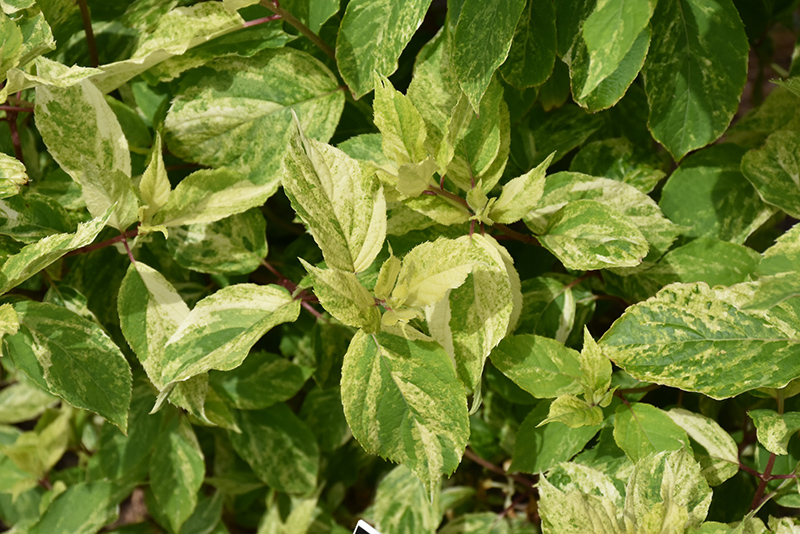Summer Snow Hydrangea*
Hydrangea paniculata 'Summer Snow'
* This is a "special order" plant - contact store for details
Height: 8 feet
Spread: 8 feet
Sunlight:
![]()
![]()
Hardiness Zone: 3b
Description:
A stunning variety featuring variegated foliage streaked and stippled with cream and chartreuse; showy panicles of white flowers in summer, that develop pink tones as they age; regular pruning recommended; needs slightly acidic well-drained soil
Ornamental Features
Summer Snow Hydrangea features bold conical white flowers at the ends of the branches from mid summer to mid fall. The flowers are excellent for cutting. It has attractive creamy white-variegated green foliage with hints of chartreuse. The pointy leaves are highly ornamental but do not develop any appreciable fall color. The smooth gray bark and dark red branches are extremely showy and add significant winter interest.
Landscape Attributes
Summer Snow Hydrangea is a multi-stemmed deciduous shrub with an upright spreading habit of growth. Its relatively coarse texture can be used to stand it apart from other landscape plants with finer foliage.
This shrub will require occasional maintenance and upkeep, and is best pruned in late winter once the threat of extreme cold has passed. It has no significant negative characteristics.
Summer Snow Hydrangea is recommended for the following landscape applications;
- Accent
- Mass Planting
- General Garden Use
Planting & Growing
Summer Snow Hydrangea will grow to be about 8 feet tall at maturity, with a spread of 8 feet. It tends to be a little leggy, with a typical clearance of 2 feet from the ground, and is suitable for planting under power lines. It grows at a medium rate, and under ideal conditions can be expected to live for 40 years or more.
This shrub does best in full sun to partial shade. It prefers to grow in average to moist conditions, and shouldn't be allowed to dry out. It is not particular as to soil type, but has a definite preference for acidic soils. It is highly tolerant of urban pollution and will even thrive in inner city environments. Consider applying a thick mulch around the root zone in winter to protect it in exposed locations or colder microclimates. This is a selected variety of a species not originally from North America.
* This is a "special order" plant - contact store for details

